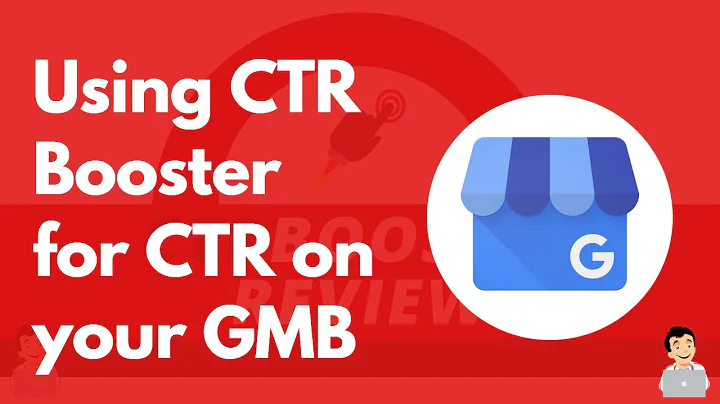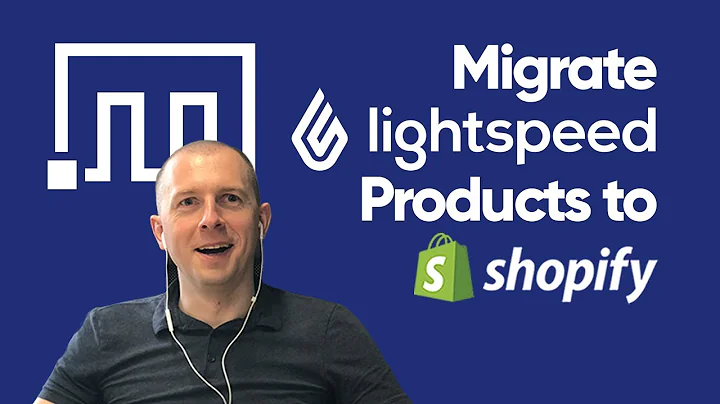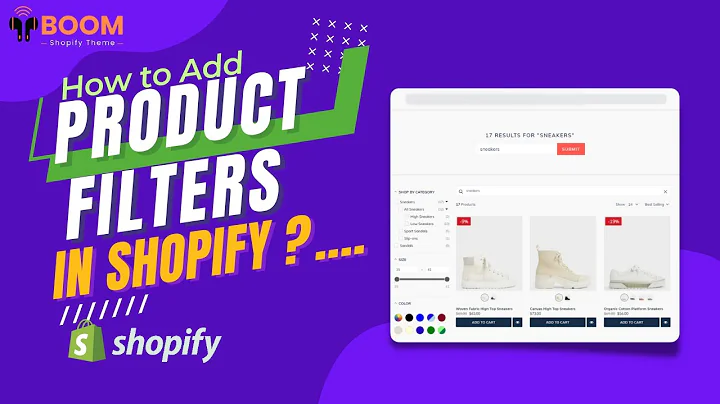Master Shopify SEO Now!
Table of Contents
- Introduction to Shopify SEO
- Free Tools for Shopify SEO
- Site Structure and User Experience
- Keywords and Keyword Research
- Slug Optimization
- Image Optimization and Alt Text
- Product Page Optimization
- Schema Markup
- Content Marketing for Shopify SEO
- Link Building Strategies
- Top Shopify SEO Apps
Introduction to Shopify SEO
Shopify is a popular e-commerce platform that allows businesses to create online stores. However, simply creating a Shopify store is not enough to attract customers and generate sales. To maximize the visibility of your Shopify store on search engines like Google, it is important to implement effective Search Engine Optimization (SEO) strategies. This ultimate guide will provide you with step-by-step instructions on how to optimize your Shopify store for better visibility and higher search engine rankings. From free tools and site structure to keyword research and content marketing, we will cover all the essential aspects of Shopify SEO.
1. Free Tools for Shopify SEO
Before diving into the nitty-gritty of optimizing your Shopify store, it is essential to familiarize yourself with helpful free tools that can aid in your SEO efforts. Two essential tools for Shopify SEO are Google Search Console and Google Analytics. Google Search Console provides valuable information about your store's performance in organic search results, including click-through rates, impressions, and average positioning. Google Analytics, on the other hand, offers detailed insights into various aspects of your e-commerce store, allowing you to track and analyze your website's traffic, user behavior, and conversions. It is important to set up both these tools and leverage the data they provide to optimize your Shopify store effectively.
2. Site Structure and User Experience
Optimizing your site structure and ensuring a seamless user experience is crucial for better search engine rankings. Google aims to showcase web pages that offer the best user experience to its users. Thus, having a well-organized and user-friendly site structure can significantly impact your store's visibility in search results. It is essential to have a clear navigation system that allows visitors to easily explore your website's hierarchy. This includes creating clean menu options and categorizing your products in a logical and easy-to-navigate manner. Pay attention to your header menu and ensure it provides a clear and concise overview of your store's key categories or product collections. Keeping the design simple and intuitive while aligning it with what your target customers are searching for will enhance the user experience and positively impact your search rankings.
3. Keywords and Keyword Research
One of the most critical aspects of Shopify SEO is identifying and targeting the right keywords. Keywords are the words or phrases that people use when searching for products or services on search engines. By optimizing your store's content with relevant keywords, you increase the chances of appearing in search results when potential customers are searching for products similar to what you offer. Conducting thorough keyword research allows you to identify high-demand, low-competition keywords that align with your store's products and target audience. Tools like SEMrush can aid in keyword research by providing insights into search volume, competition, and related keyword suggestions. By incorporating these keywords strategically in your product descriptions, titles, headings, and other content, you can improve your store's visibility in search engine rankings.
4. Slug Optimization
A slug refers to the portion of a URL that comes after the domain name and categorizes specific web pages on your site. Optimizing slugs for your Shopify store is crucial for both user experience and search engine optimization. By structuring your slugs in a way that is clear, concise, and relevant to the content of the page, you make it easier for both users and search engine bots to understand the page's purpose. For example, incorporating keywords in your slug can enhance its visibility in search engine results. When optimizing slugs, consider the hierarchy of your website, the structure of your collections and product pages, and the keywords you want to rank for. By carefully crafting and optimizing your slugs, you can strengthen your store's SEO performance.
5. Image Optimization and Alt Text
Images play a vital role in e-commerce websites, and optimizing them can significantly impact your Shopify store's SEO. Image optimization involves reducing the file size of images to improve website loading speed, which is a crucial factor in search engine rankings. Slow-loading websites can lead to higher bounce rates and negatively affect user experience. Additionally, adding alt text to your images helps search engines understand and index the images, leading to better visibility in image search results. When optimizing images for your Shopify store, use tools like Photoshop or free online tools to compress images while maintaining their quality. Additionally, remember to provide relevant and descriptive alt text for each image, including relevant keywords when appropriate. These measures help improve your store's overall SEO performance and user experience.
6. Product Page Optimization
Product pages are the core of any e-commerce store, and optimizing them is vital for maximizing search engine visibility and driving conversions. When optimizing your product pages, it is crucial to provide comprehensive and compelling descriptions that highlight the product's features, benefits, and unique selling points. Aim for at least 200 words in your product descriptions and scatter relevant keywords throughout the text. Utilize headings (H2 and H3) to structure your content and make it easier for both users and search engines to understand the information. Incorporate lists and bullet points to break down information and make it easily scannable. Additionally, consider including customer reviews, sizing information, and detailed product specifications to enhance the user experience and increase conversions.
7. Schema Markup
Schema markup is a structured data format that helps search engines better understand the content on your Shopify store and display rich snippets in search results. It provides additional context to search engines about your products, prices, ratings, and other essential information. By implementing schema markup on your product pages, you can enhance your store's visibility in search results and potentially improve click-through rates. Shopify offers built-in schema markup, but you can also use SEO apps that provide more advanced schema markup options. Implementing schema markup not only improves search engine visibility but also enhances the overall user experience by providing more informative and visually appealing search results.
8. Content Marketing for Shopify SEO
Content marketing is a powerful strategy for improving your Shopify store's visibility and attracting organic traffic. By creating high-quality, informative, and engaging content related to your products and target audience, you can establish your store as a trusted source of information. Blogs, articles, guides, and other forms of content can help build brand authority, attract backlinks, and drive organic traffic to your store. When creating content, ensure it is optimized with relevant keywords and provides valuable information that answers potential customers' questions or addresses their pain points. Content marketing is a long-term strategy that requires consistency and quality, but it can yield significant results in terms of increased visibility, brand recognition, and conversions.
9. Link Building Strategies
Building quality backlinks is an essential aspect of Shopify SEO that can improve your store's authority and search engine rankings. Backlinks are links from external websites that point to your store, indicating to search engines that your store is trustworthy and relevant. To start building backlinks, analyze your competitors' backlink profiles using tools like SEMrush. Identify websites that link to your competitors and reach out to them to request a link to your store as well. Additionally, you can leverage your content marketing efforts to attract natural backlinks. Create high-quality, valuable content that other websites may find helpful, and reach out to them, offering your content as a resource. Building quality backlinks takes time and effort, but it can significantly boost your store's SEO performance.
10. Top Shopify SEO Apps
Shopify offers a variety of third-party SEO apps that can help streamline and enhance your SEO efforts. These apps provide additional features and functionalities to optimize various aspects of your store for search engines. Some of the top SEO apps for Shopify include Aveda SEO Suite, Plug-in SEO, SEO Expert Pro, and Yoast SEO for Shopify. These apps offer features such as image optimization, schema markup implementation, meta tag optimization, broken link detection, and more. Choose the app that best suits your specific SEO needs and integrate it into your Shopify store to further enhance your SEO performance.
In conclusion, optimizing your Shopify store for search engines is essential for attracting organic traffic, increasing visibility, and driving conversions. By following the strategies outlined in this ultimate Shopify SEO guide, you can significantly improve your store's search engine rankings and overall online success. From implementing free tools and optimizing site structure to conducting keyword research, creating valuable content, and building quality backlinks, each step plays a crucial role in maximizing your store's SEO performance. Stay consistent, monitor your results, and continuously refine your SEO strategies to stay ahead of the competition and achieve long-term success with your Shopify store.
Highlights:
- Shopify SEO is vital for attracting organic traffic and generating sales.
- Free tools like Google Search Console and Google Analytics are essential for monitoring and analyzing your store's performance.
- Optimizing site structure and user experience improves search engine visibility and user engagement.
- Thorough keyword research helps identify high-demand, low-competition keywords to target.
- Slug optimization ensures clear and relevant URLs for better search engine understanding.
- Image optimization and alt text inclusion enhance website loading speed and accessibility.
- Product page optimization includes comprehensive descriptions, headings, lists, and customer reviews.
- Schema markup provides search engines with additional context and improves search result visibility.
- Content marketing drives organic traffic and establishes your store as an authority in your niche.
- Link building strategies, including reaching out to websites and creating valuable content, build domain authority and credibility.
- Shopify offers various SEO apps, such as Aveda SEO Suite, Plug-in SEO, SEO Expert Pro, and Yoast SEO for Shopify, to streamline and enhance your SEO efforts.
FAQ:
Q: How long does it take for SEO to show results for my Shopify store?
A: SEO is a long-term strategy, and results may vary. It can take several weeks or even months to see significant improvements in search engine rankings and organic traffic. Consistency, quality content, and continuous optimization are key to achieving long-term success with SEO.
Q: Do I need to hire an SEO expert for my Shopify store?
A: While hiring an SEO expert can provide valuable expertise and save you time, it is not necessary. With the right knowledge, tools, and dedication, you can optimize your Shopify store for SEO success on your own. The strategies outlined in this guide can help you get started and achieve positive results.
Q: Is Shopify SEO different from SEO for other e-commerce platforms?
A: While there may be some platform-specific considerations, the fundamental principles of SEO apply to all e-commerce platforms. Optimizing your website's structure, content, keywords, and backlinks is essential regardless of the platform you use. By following best practices and staying up to date with SEO trends, you can achieve success with Shopify SEO.






















